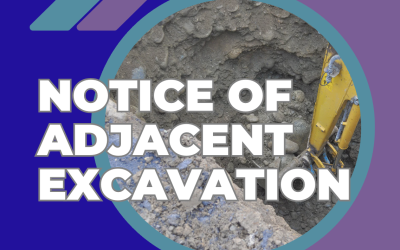In this week’s property surveying blog, we will be looking into Party Wall Notices and how to ensure that the notice served is deemed valid.
Party Wall Notices are in place to first and foremost invoke the Party Wall etc Act 1996 upon the adjoining owner(s), however, also notify them of the building owner’s proposed and planned works to their property.
Party Wall Notices should be simple in their form, the notification should also include sufficient information so that the adjoining owner can make a fully informed decision in response to the Party Wall Notice received.
Once notice is served, the adjoining owner(s) has 3 response options available to them:
Response Option 1: Party Wall Notice Consent
Consenting means the adjoining owner will be giving the go-ahead without any further of the Act’s procedures being followed.
Here at Stokemont, in an attempt to ensure the building owners’ protection against any potential false damage claim as well as any damage occurring to a consenting adjoining owner during or post-construction work, we would still highly recommend that a Schedule of Condition Report of the adjoining owner’s property is opted for.
A Schedule of Condition Report involves a Party Wall Surveyor visiting the adjoining property prior to the construction work commencing, to record the current condition, the surveyor will would then provide a copy of this report to each respective owner acting as a record of proof in the event of a damage claim.
The building owner would be liable for the Schedule of Condition Report fees, should the adjoining owner wish to have the inspection undertaken.
Response Option 2: Party Wall Notice Dissent, Agreed Surveyor Appointment
Dissenting and appointing an Agreed Party Wall Surveyor essentially means that one Surveyor acts impartially on behalf of both the building owner and the adjoining owner.
The Surveyor’s role will be to protect the interests of both owners impartially via the agreement of a Party Wall Award which is the final legally binding document, governing the construction work and adding damage protection above and beyond common law for both the building owner and the adjoining owner.
The building owner would be solely legally liable for both Party Wall Surveyors’ fees.
Response Option 3: Party Wall Notice Dissent, Two Surveyor Appointment
Dissenting and appointing their own Surveyor will mean that an adjoining owner chose to appoint an independent Party Wall Surveyor from the Building Owner. At this stage, both Surveyors will select a third surveyor in the interim who can mediate any disputes that arise. Other than this, the surveyors will undertake the same roles as response option 2, concluding their input via the agreement of a Party Wall Award.
The building owner would be legally liable for both Party Wall Surveyors’ fees.
Once an option has been selected by the adjoining owners, the next stage would be to arrange for access to the neighbouring properties for the Schedule of Condition Report to undertaking either by the surveyor or surveyors, if two are included within the procedure.
How do I ensure the Party Wall Notice is Valid?
Generally speaking, there’s a thin line between a valid and invalid notice, as previously confirmed, Party Wall Notices should be simple in their form, with the sole purpose being to notify the adjoining owners of the proposal. The notification should also include sufficient information so that the adjoining owner can make a fully informed decision in response to the Party Wall Notice received.
To ensure a Party Wall notice is deemed valid when served they must at the very least include the following:
- The date of service
- Legal owner(s) name(s)
- The Section of the Party Wall etc Act that the proposed works relate to
- A brief description of the proposed works
- Should the works include excavation, a section drawing displaying the foundation depth must be included alongside the notice.
- The document must be signed by the individual serving the notice
Ensuring the points listed above have been followed, during the preparation of a party wall notice, will validate the notice.
In the absence of those, the notice will be deemed invalid with the legal standing and statuary time frame being void. To address an invalid notice, the building owner will need to re-serve Party Wall Notices and all legal timeframes and periods will be re-set as a result causing delayed to the planned works.
If indeed you would like to serve a Party Wall Notice, or perhaps you have received a Party Wall Notice, you are very welcome to give us a call, we will be more than happy to assist and advise.
Here at Stokemont, our surveyors are not only specialist party wall surveyors, but we are also building surveyors by trade.
This places us in an incredibly informed position to assist with party wall surveying matters, as we categorically understand the makeup and fabric of structures and properties.
If you would like to discuss your property surveying need with us, feel free to give us a call, or pop us an email, we will be more than happy to assist and advise you.




